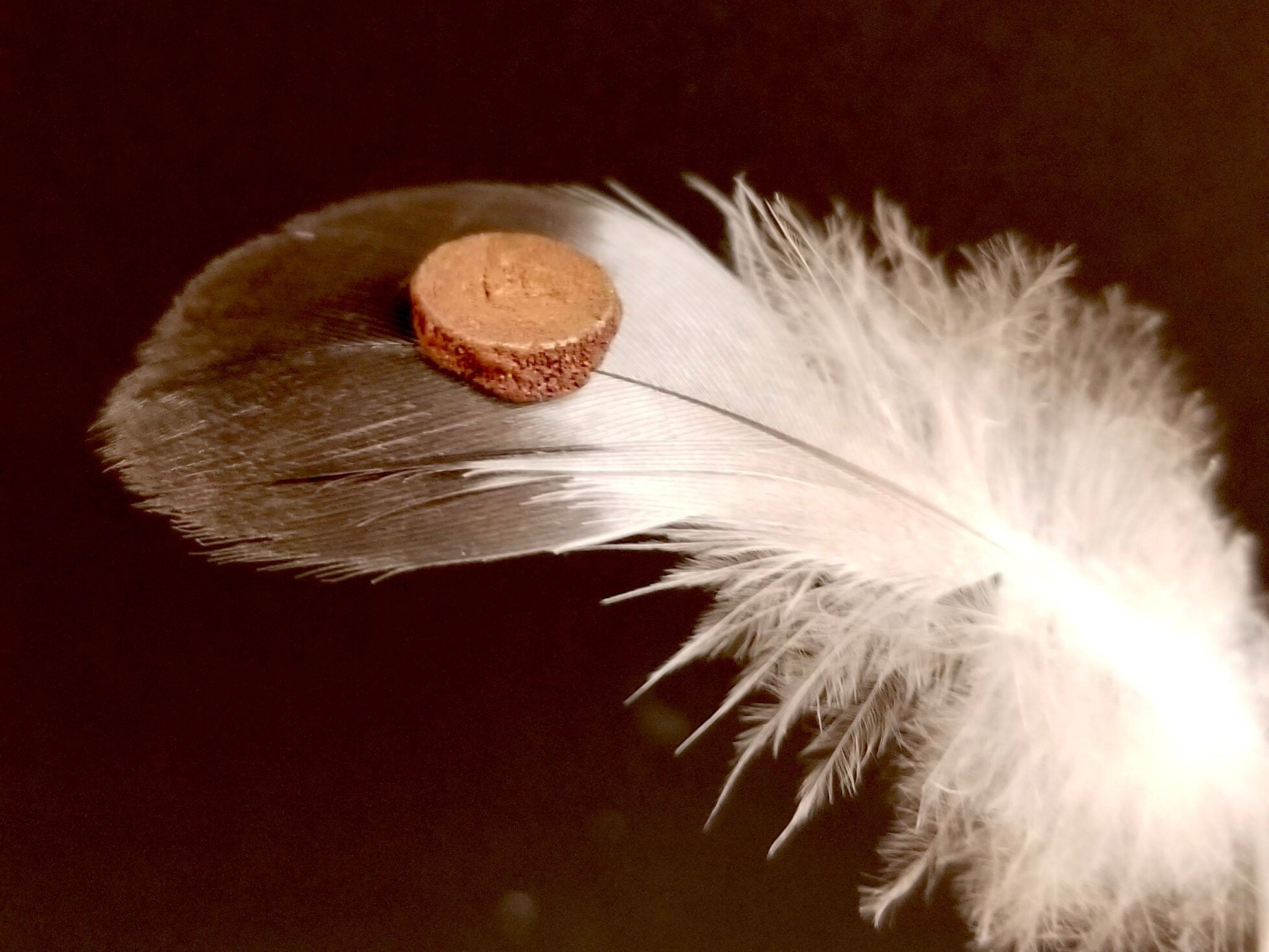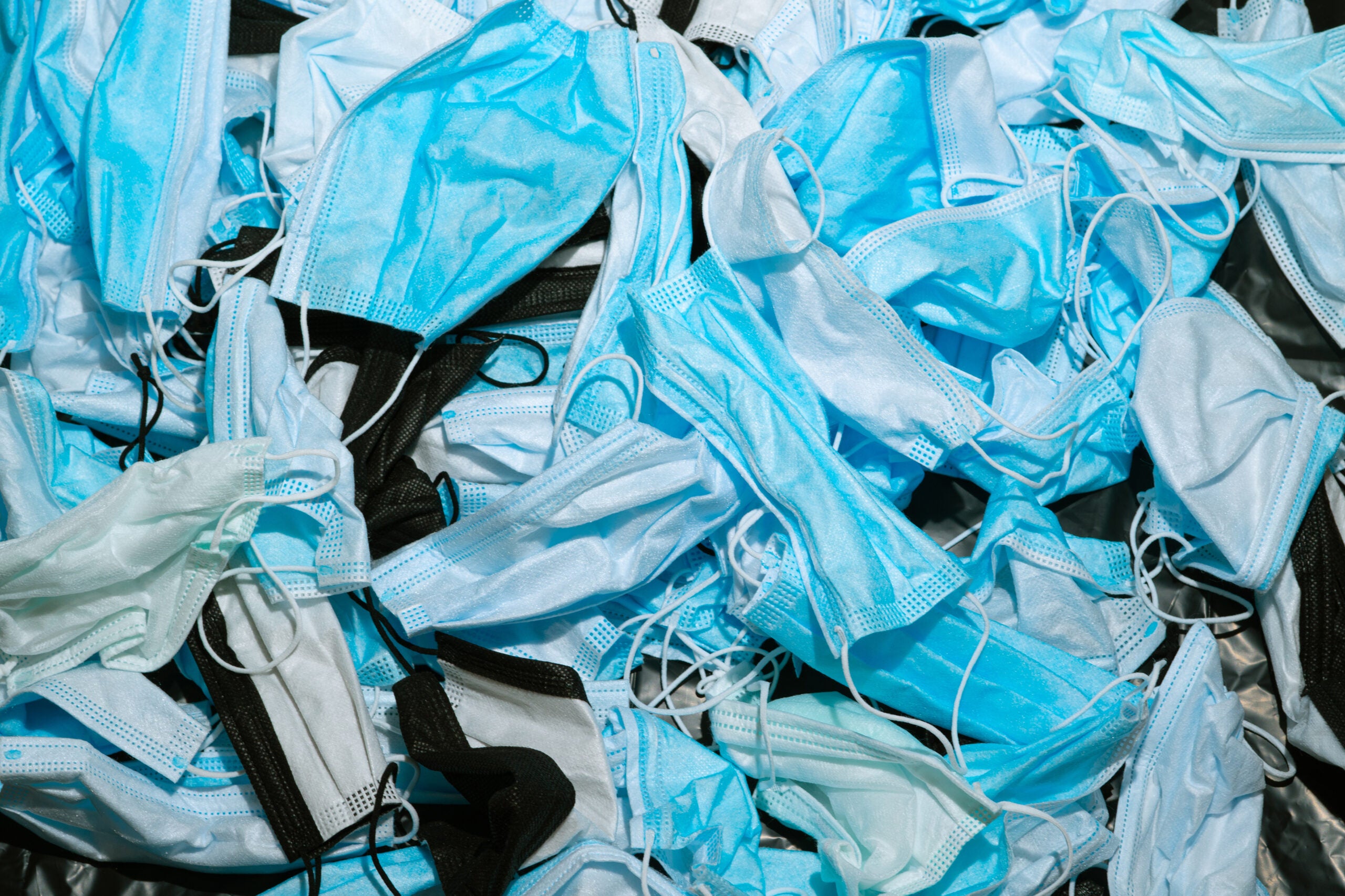Turning Copper Against Covid
Georgetown physicists make a breakthrough in air filtration
Author: Piper Conway
A reliable facemask has become a critical weapon against the spread of COVID-19. However, not all facemasks are equal. Masks of all kinds litter streets and create extensive landfill waste around the world. The N95 is the gold standard for an effective mask, but the single-use, non-biodegradable mask carries a high environmental footprint. Can science help this uncomfortable tradeoff between health and the environment?
Professor Kai Liu and fellow researchers from Georgetown’s physics department have devised a solution. In a recently published Nano Letters study, Liu and his colleagues James Malloy, Alberto Quintana, and Christopher J. Jensen transformed copper nanowires into metal foams that effectively filter out microbes. Their research shows that copper foam is a highly efficient, durable, reusable, and recyclable filtration system that might be utilized in both facemasks and air cleaners. That is: it is effective and reusable.
The team is a finalist in the Mask Innovation Challenge by the Biomedical Advanced Research and Development Authority (BARDA) and the National Institute for Occupational Safety and Health (NIOSH). They were the only university-based team to be honored with this Phase-1 award.

In the study, “Efficient and Robust Metallic Nanowire Foams for Deep Submicrometer Particulate Filtration,” the Georgetown physicists demonstrated that nanowire-based metal foams serve as efficient particulate filters because they combine “extremely large surface areas with excellent mechanical properties.” Malloy elaborated, “the metal foams exhibit outstanding filtration efficiencies, near 100% efficiency for much of the 0.1-1.6 micron size range, which is particularly relevant for capturing SARS-CoV-2 virus. They also have comparable breathability as N95 masks.”
These foams offer additional benefits that many existing filter materials lack. “They are durable enough to undergo cleaning, decontamination, and reuse; thus offering an attractive solution to minimizing the volume of polymer-based waste face masks created during this pandemic,” explained postdoctoral fellow Alberto Quintana and graduate student Christopher Jensen, who were also involved in the study.
Professor Liu and his group have been working with ultralight-weight metallic materials since 2010. Their research took a novel turn in 2016 when the UC Davis physics department, where Liu was at the time, initiated arenewed its focus on environmental research, courtesy of a gift by donors Tom and Ginny Cahill. This nudge made the researchers wonder whether metal foams they previously developed could filter air.
“This turned out to be a very challenging project,” Liu explained of its early exploration stage. “Our foams were made to be lightweight, and while stable enough to hold together, were still quite delicate. They could not sustain realistic air flows. At that point we had zero experience in air filtration and had to start from scratch. Eventually, we figured out how to strengthen the foams without sacrificing their filtration performance. We are thankful to many colleagues who have helped.”
Liu and his graduate student, James Malloy, initially sought to address the problem of air pollution, classified by the World Health Organization as “the worst global environmental killer.” They focused on particulates found in smog which are often in the sub 0.3 micron regime. Such particles can penetrate deep into the respiratory system and pose the most health risks.
“When COVID-19 hit, it made our project all the more urgent”
Dr. Kai Liu
The coronavirus pandemic further illustrated that ultrasmall particulates play an important, and often underestimated, role in our health. The SARS-CoV-2 virus, which is responsible for the COVID-19 disease, can spread by larger airborne droplets that are many microns in size, as well as by smaller aerosols in the micron size range and below. These smaller aerosols are much more difficult to capture. They require specialized filters, such as N95 masks, which are difficult to decontaminate and reuse.
The new type of filter is expected to be economically competitive on the per-use basis with current products largely because they are durable, reusable, and recyclable. Malloy stated, “the estimated materials costs come out to around $2 per mask (assuming dimension similar to the active filtration layer in N95 masks), which will be substantially reduced if mass-produced on an industrial scale.”
Liu and his group are excited to continue their work on researching and improving the filtration efficiency of the metal foams. They have plans to conduct prototype demonstrations in order to optimize the mechanical properties for a variety of targeted applications. Dr. Liu elaborated, “We’d like to gain a better understanding, on the microscopic scale, which design works best for specific types of particulates.” The group is in the process of seeking additional support to carry out these studies, and they are grateful for the funding they have already received from the Georgetown Environment Initiative, the McDevitt Endowment, and the inspiration and grant received from Liu’shis late colleague Tom Cahill.
Learn more in the Physics World podcast, “Metallic foams for face masks, why the UK needs an X-ray free electron laser,” published Jul 8, 2021.

